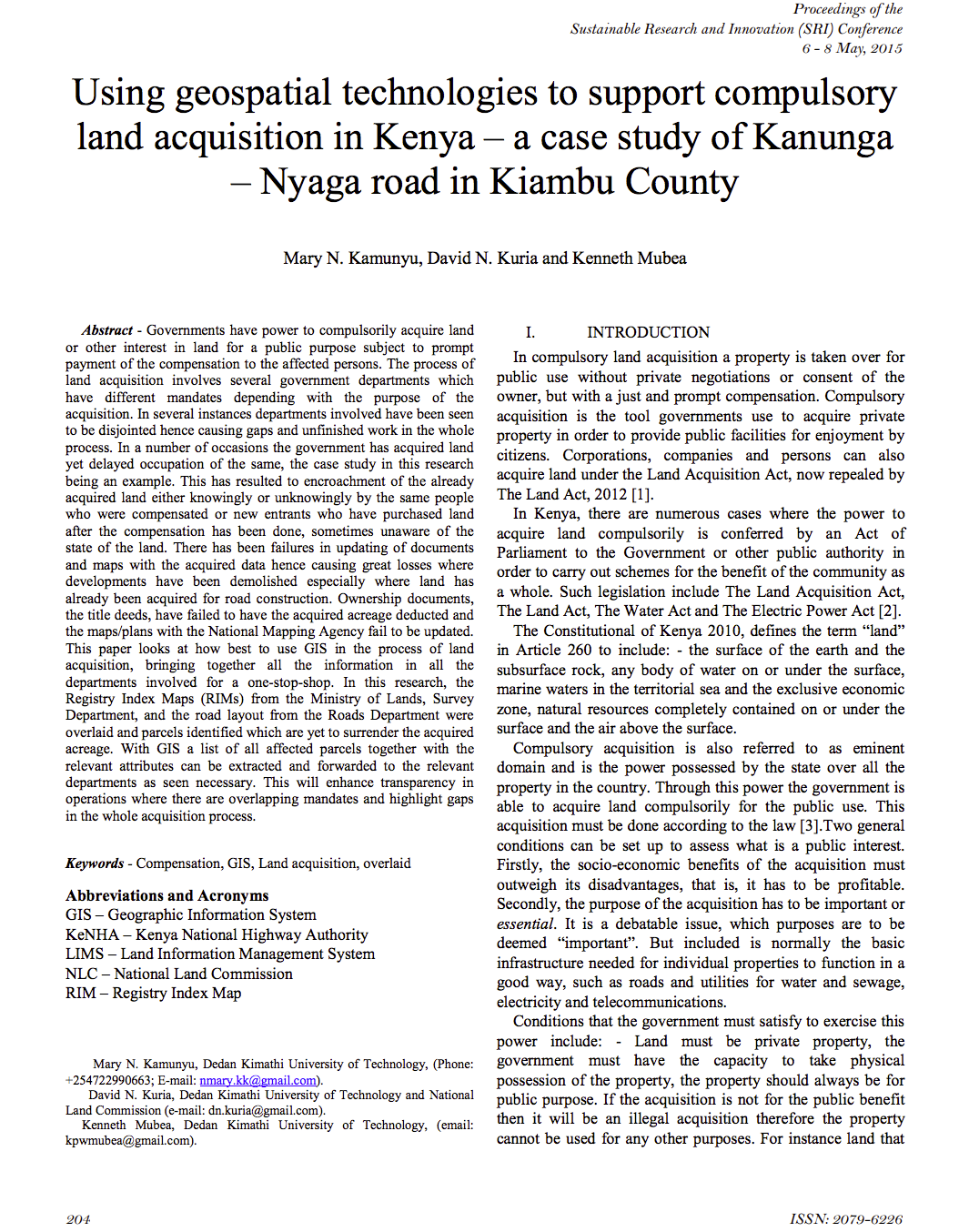Resource information
Governments have power to compulsorily acquire land or other interest in land for a public purpose subject to prompt payment of the compensation to the affected persons. The process of land acquisition involves several government departments which have different mandates depending with the purpose of the acquisition. In several instances departments involved have been seen to be disjointed hence causing gaps and unfinished work in the whole process. In a number of occasions the government has acquired land yet delayed occupation of the same, the case study in this research being an example. This has resulted to encroachment of the already acquired land either knowingly or unknowingly by the same people who were compensated or new entrants who have purchased land after the compensation has been done, sometimes unaware of the state of the land. There has been failures in updating of documents and maps with the acquired data hence causing great losses where developments have been demolished especially where land has already been acquired for road construction. Ownership documents, the title deeds, have failed to have the acquired acreage deducted and the maps/plans with the National Mapping Agency fail to be updated. This paper looks at how best to use GIS in the process of land acquisition, bringing together all the information in all the departments involved for a one-stop-shop. In this research, the Registry Index Maps (RIMs) from the Ministry of Lands, Survey Department, and the road layout from the Roads Department were overlaid and parcels identified which are yet to surrender the acquired acreage. With GIS a list of all affected parcels together with the relevant attributes can be extracted and forwarded to the relevant departments as seen necessary. This will enhance transparency in operations where there are overlapping mandates and highlight gaps in the whole acquisition process



